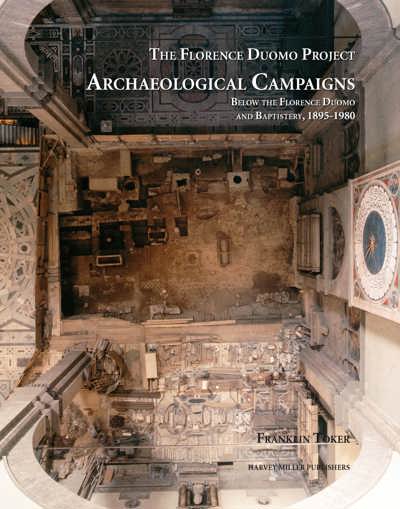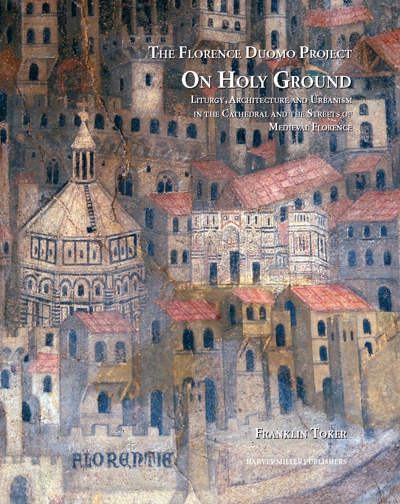
On Holy Ground: Liturgy, Architecture and Urbanism in the Cathedral and the Streets of Medieval Florence
Franklin Toker
- Pages: 324 p.
- Size:220 x 280 mm
- Illustrations:52 b/w
- Language(s):English, Latin
- Publication Year:2009
- € 110,00 EXCL. VAT RETAIL PRICE
- ISBN: 978-1-905375-51-6
- Hardback
- Available
"The projected four-volume publication is a serious enterprise that deserves praise (...)" (B. Ward-Perkins, in: Journal of Medieval Archaeology, vol. 55, 2011, p. 371-372)
The volume then reconstructs the canonry (torn down around 1840), where the officiating priests lived, and the neighboring buildings on the cathedral square: a hospital, a school, and a prominent city gate that long ago disappeared, and a Baptistery, bishop's palace, and confraternity headquarters that are still standing.
One chapter is devoted to the religious processions that ventured forth from S. Reparata to wind through the streets of Florence. Here the old texts are brought to life by the towers, bridges, churches, and monuments that survive from medieval Florence. The processional routes are examined for their social, political, and economic importance to the cathedral clergy, and the way the routes delineated the main lines of Roman Florence. The final chapter explores the food that poured onto the tables of the cathedral clergy from the farms and villages of the Florentine countryside. Altogether, the volume provides an exceptional look at the physical and spiritual impact of Florence's thousand-year-old cathedral in the age of Dante.


